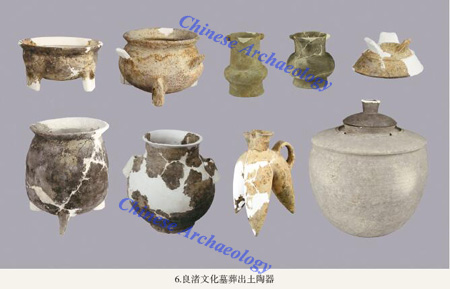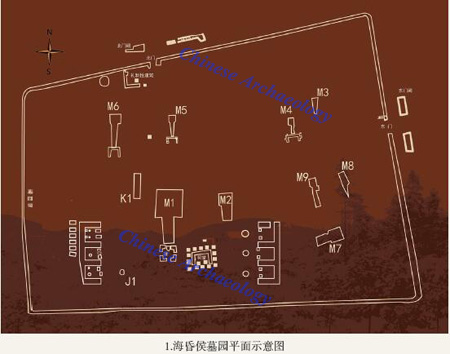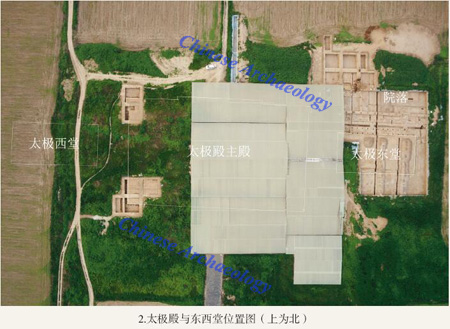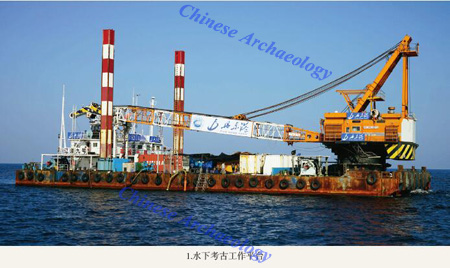Top Six New Archaeological Discoveries in China 2015 Announced--“New Archaeological Discoveries in China” Archaeology Forum in Beijing
From:Chinese Archaeology NetWriter:Li XinweiDate:2016-01-13
The eye-catching annual “New Archaeological Discoveries in China” Archaeology Forum sponsored by the Chinese Academy of Social Sciences (CASS) and organized by the Institute of Archaeology of CASS and Archaeology Press was held in Beijing on January 12th, 2016. Professor Wang Wei, head of the Institute of Archaeology CASS announced the six selected important archaeological discoveries in 2015.Neolithic sites in southeastern Hainan Island
Liangzhu period Jiangzhuang site in Dongtai, Xinghua City, Jiangsu Province
ZhouYuan site in Baoji City, Shannxi Province
Tomb of the Duke Haihunhou of the Western Han Dynasty in Nanchang City
Jiangxi Province, the Taiji Palace of the Northern Wei Dynasty in Luoyang City, Henan Province, The shipwreck “Dandong No1” of the Qing Dynasty in Dandong City, Liaoning Province
The Archaeological Forum started in 2002 provides a platform for sharing information on the latest archaeological discoveries and academic research. It also promotes academic exchange and encourages the development of the archaeology in China.
Dr. Hong Shi, head of the Archaeology Press, presided the forum. More than 200 audiences joined the event, including the head of National Administration of Cultural Heritage, the head of CASS, archaeologists, scholars and graduate students from different institutions, museums and universities and journalists from different media.

Aerial photo of Qiaoshan site Hainan Island
Neolithic sites in southeastern Hainan Island
The field survey and digging in the southeastern Hainan Island establishes a time-spatial frame work of the Neolithic archaeological cultures (from about 6000 to 4000 BP) in this important area which is a blank space for archaeologists before. The local cultures show some crucial characteristics while sharing similarities with their contemporary cultures in the mainland.
Full Story: http://www.kaogu.cn/en/News/New_discoveries/2016/0119/52841.html

Pottery unearthed from Liangzhu culture cemetery Jiangzhuang site
Liangzhu period Jiangzhuang site
The site is the first large settlement of the powerful Liangzhu culture (about 5300 to 4300 BP) ever found to the north of the Yangzi River Valley. The elite burials found at the site shed light on the research on the social structure of the Liangzhu societies in the frontier area, as well as the discussion of the relationship between Lianzhu and her counterpart – the Dawenkou culture, centered in current Shangdong Province.
Full Story: http://www.kaogu.cn/en/News/New_discoveries/2016/0119/52841.html

No.3 Fengchu foundation of Zhouyuan Site
New palace foundations found in last year give new examples of the ritual building complex of the ancient capital of the Zhou people. The discovery of large scale irrigation system is a real shock in archaeological circle and will sure trigger new discussion of relationship between the city and its nature environment.
Full Story: http://www.kaogu.cn/en/News/New_discoveries/2016/0122/52891.html

Plan of Haihunhou cemetery
Duke Haihunhou’s Tomb
The tomb is one of the best preserved burials of the dukes of the Western Han Dynasty, with a large number of shining gold and jade offerings.
Full Story: http://www.kaogu.cn/en/News/New_discoveries/2016/0115/52805.html?1452846195

Aerial photo of Taiji Hall with Western and Eastern Hall
Taiji Hall is the most important ceremonial location in the imperial palace of the Northern Wei Dynasty. It is the founder of some crucial rules of the plan and construction of royal palaces. New discoveries show some details of the structure of the Hall.

Working platform for underwater archaeology
The Dandong No.1 shipwreck
The size, shape of the ship and artifacts found in it make archaeologists believe that it is the famous Zhiyuan vessel destroyed by the Japanese navy in the Sino-Japanese war of 1894-1895.
Full Story: http://www.kaogu.cn/en/News/New_discoveries/2016/0118/52825.html?1453088990

